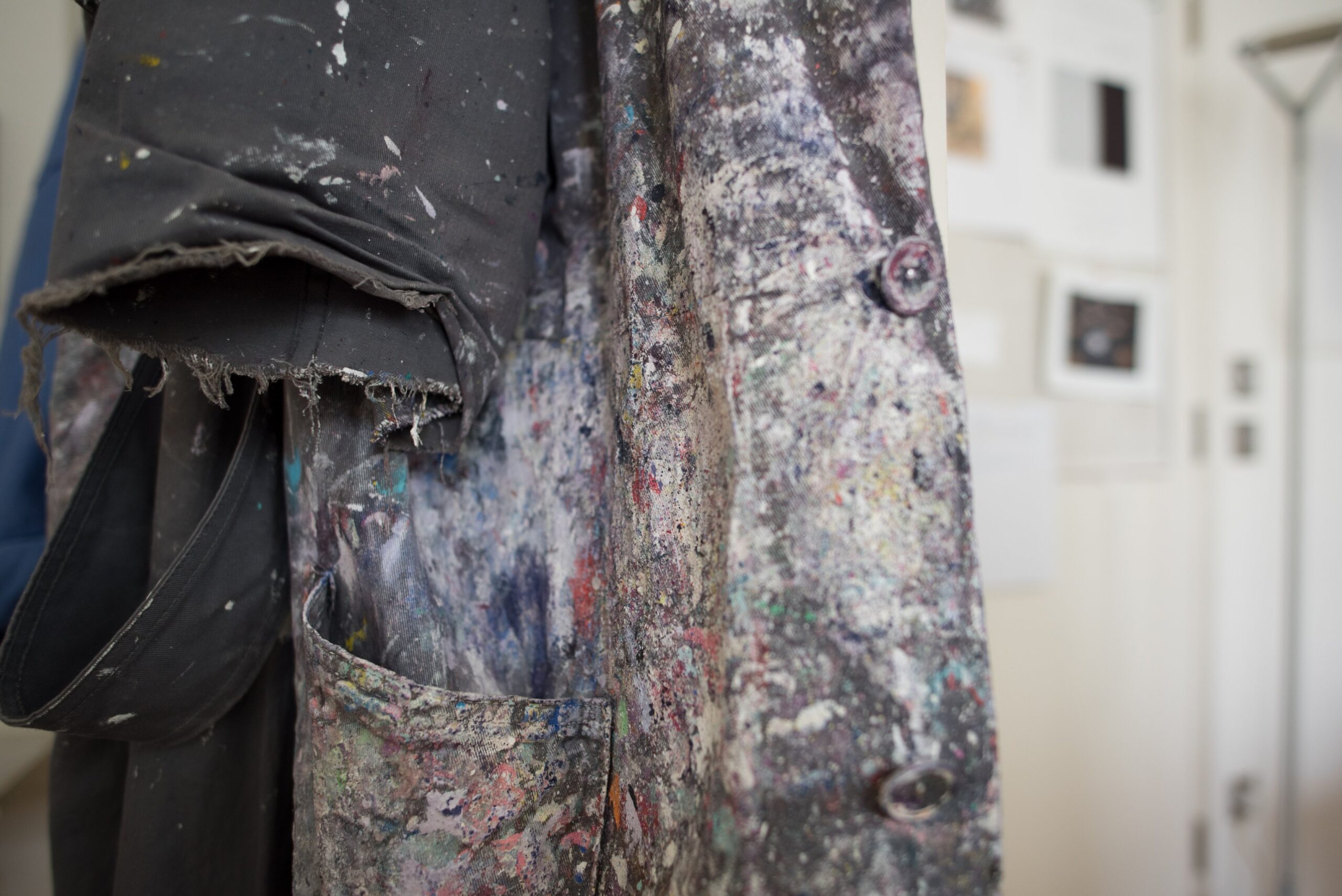
Tess Jaray's studio
Photo: Brian Benson 2016, courtesy of DACS
Copyright protection and infringement
Do you know your rights? Abby Yolda answers some common questions about the copyright of artistic works and what to do if your work is used without your permission.
How do I copyright my artwork?
The answer is simple: you don’t need to do anything – no legal processes or registration. Copyright protection is automatically given to a work as soon as you create it in a fixed material form. But only the creative output is protected, so ideas don’t count.
In the UK, copyright of artistic works lasts for your lifetime, plus 70 years after your death. Although there is no formal registration process, it is good practice to keep records of the artistic works you have created.
What does the copyright of my work allow me to do?
As the copyright owner, you own something of value. You have the exclusive right to decide how your artwork is reproduced, distributed, rented out and communicated to the public. No one else can carry out these ‘restricted acts’ without your permission, as this would be a copyright infringement unless an exception applies (explained below).
You have the exclusive right to decide how your artwork is reproduced, distributed, rented out and communicated to the public
You can capitalise on this by granting permission for your works to be reproduced in a wide variety of ways, including merchandise or publications, through a process known as licensing. By licensing your work, you can specify how your artwork is used and set a fee.
However, a limited number of exceptions exist, when someone does not need to seek permission to carry out restricted acts. Common exceptions include reporting current events, incidental inclusion in another work and making graphic representations, such as a photograph of buildings and sculptures permanently situated in public places. It may not always be clear whether an exception applies and you may wish to seek advice to ensure a particular use does not infringe your copyright.
Copyright can also be assigned to a third party by written agreement, meaning you can transfer your rights to a new owner. Make sure you are clear about what rights you are granting whenever you sign a contract, as you could inadvertently assign your copyright to a new owner.
Do I have any other rights?
As the creator of an original artwork, you also have moral rights. These rights remain with you even if you’ve assigned the copyright to someone else. However, it is possible to waive these rights by written agreement, so again check any contracts before signing to ensure that you are clear about what rights you are granting.
Moral rights entitle you to be identified whenever your work is commercially published or exhibited to the public, object to any derogatory treatment of your work, or refuse any copies to be exhibited or issued publically if it was privately commissioned. These are assertive rights, which you need to indicate your wish to exercise, for example in a statement within a contract.
What if my work has been used without my permission?
If you see your work used without your permission and where no exception applies, this amounts to a copyright infringement. You can take this up with the person using the work, such as a publisher or a fashion brand.
A common misconception is that for an infringement to arise the unauthorised use has to be of the whole artwork, but this is not true. Infringements can also arise when a substantial part of an artwork is used, which could even be a small but distinctive portion of the artwork.
As the copyright owner, you are entitled to bring court proceedings against the infringer. A number of civil remedies may be granted for successful claims such as an award of damages or an injunction to stop the use immediately. Court proceedings can be costly and time consuming, so you may wish to resolve matters by agreeing a settlement with the infringer.
Many artists feel it is hopeless to pursue large companies for claims of copyright infringement, but many companies dealing with content have a dedicated contact to manage claims. Most social media platforms also have infringement claim processes, although sometimes these aren’t as transparent and streamlined as they should be and you will need patience if you’re seeking a takedown notice.
You should always seek specialist legal advice before pursuing a claim.
Where can I go for advice?
At the Design and Artists Copyright Society (DACS), we provide information and advice on copyright and offer an infringement management service for our copyright licensing members. We provide support when their works are used without permission and have successfully negotiated many settlements on behalf of our members. We generally aim to put in place a retrospective licence so the artist can be remunerated for the unauthorised use of their work.
Other resources for information and advice include Artquest, Own It, Copyright Hub, the Intellectual Property Office, Queen Mary Legal Advice Centre, as well as law firms specialising in intellectual property and copyright law.
Artists can also bring small claims cases to the Intellectual Property Enterprise Court, which is dedicated to disputes over intellectual property.
Abby Yolda is Head of Communications at the Design and Artists Copyright Society.
www.dacs.org.uk
Join the Discussion
You must be logged in to post a comment.